|
|
|
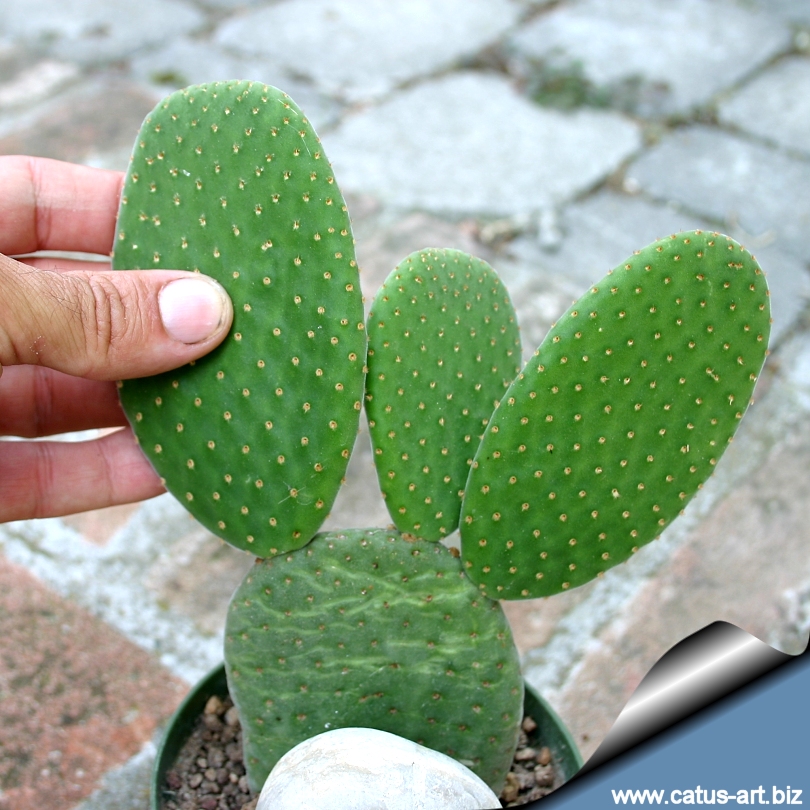
Rare glochidless no prickly form, gentle to the touch.
|
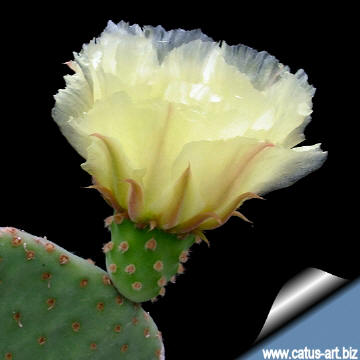 |
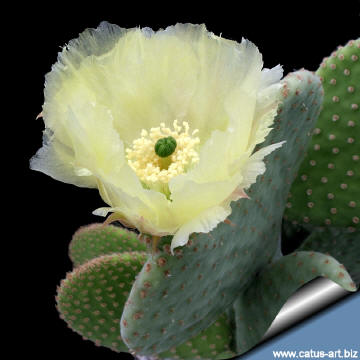 |
|
Cultivation: They are easy to culture. Require full sun to
partial shade with a well-drained soil mix. The plants are watered
and allowed to dry thoroughly before watering again. During the
winter months, the plants enjoy a cold place where the temperature
is dropped to 5/10° C, but hardy to -5° C for
short periods of time if very dry. During this period water
only enough to keep the pads from shrivelling.
Propagation: Cuttings taken at any time in the growing
season. Remove a pad from the plant and then leave it in a dry sunny
place for a couple of days to ensure that the base is thoroughly dry
and has begun to callous. Pot up into a porous compost. Very easy,
rooting within a month.
Photo of conspecific taxa, varieties, forms and
cultivars of Opuntia microdasys.
|
|


Advertising
|
|
|
|
|
Family:
Cactaceae (Cactus
Family)
Scientific Name:
Opuntia microdasys
(Lehmann) Pfeiffer
cv. Caress
Origin:
Garden origin (Nursery
produced cultivar perhaps of hybrid origin)
Conservation status: Listed in
CITES appendix 2.
Common Names include: Bunny Ears, Polka Dot Cactus
Synonyms:
- Cactus microdasys
- Opuntia macrocalyx
|
|
Description: Freely clustering succulent with
small pads. It forms a dense shrub, to 40-60 (occasionally more) cm
high, up to 1.5 m across. This plant may be of hybrid origin.
Cladodes: 7.5-15 cm long by half as wide, grass-green to
greys-green as they ages.
Areoles: Round, small with brown felt, often with the minuscle
remnants of dried leaves.
Leaves: Green tinged reddish, inconspicuous, very small 1-2 long
and ephemeral (very short living).
Spines: It has no spines and no glochids.
Flowers: Pale lemon yellow translucent, 3-5 cm in diameter followed by red
fruits.
|
|
|
|
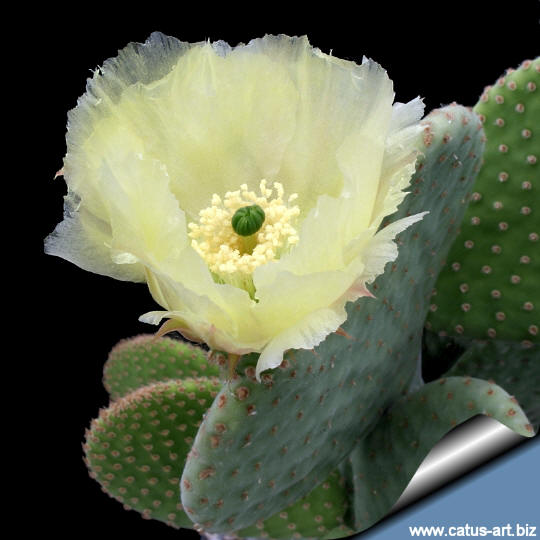
Flowers pale yellowish,
stigma green.
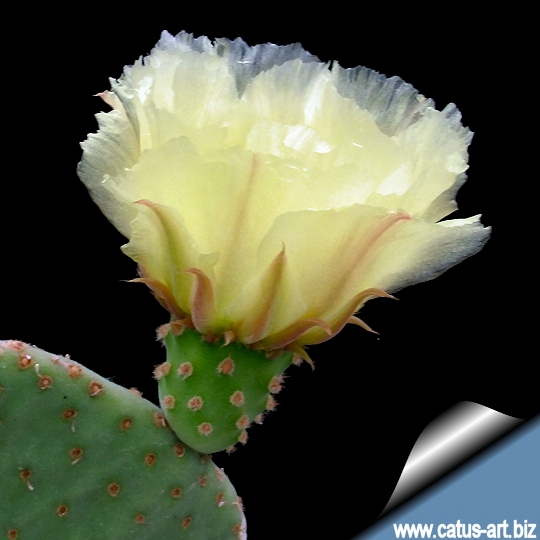 |
|